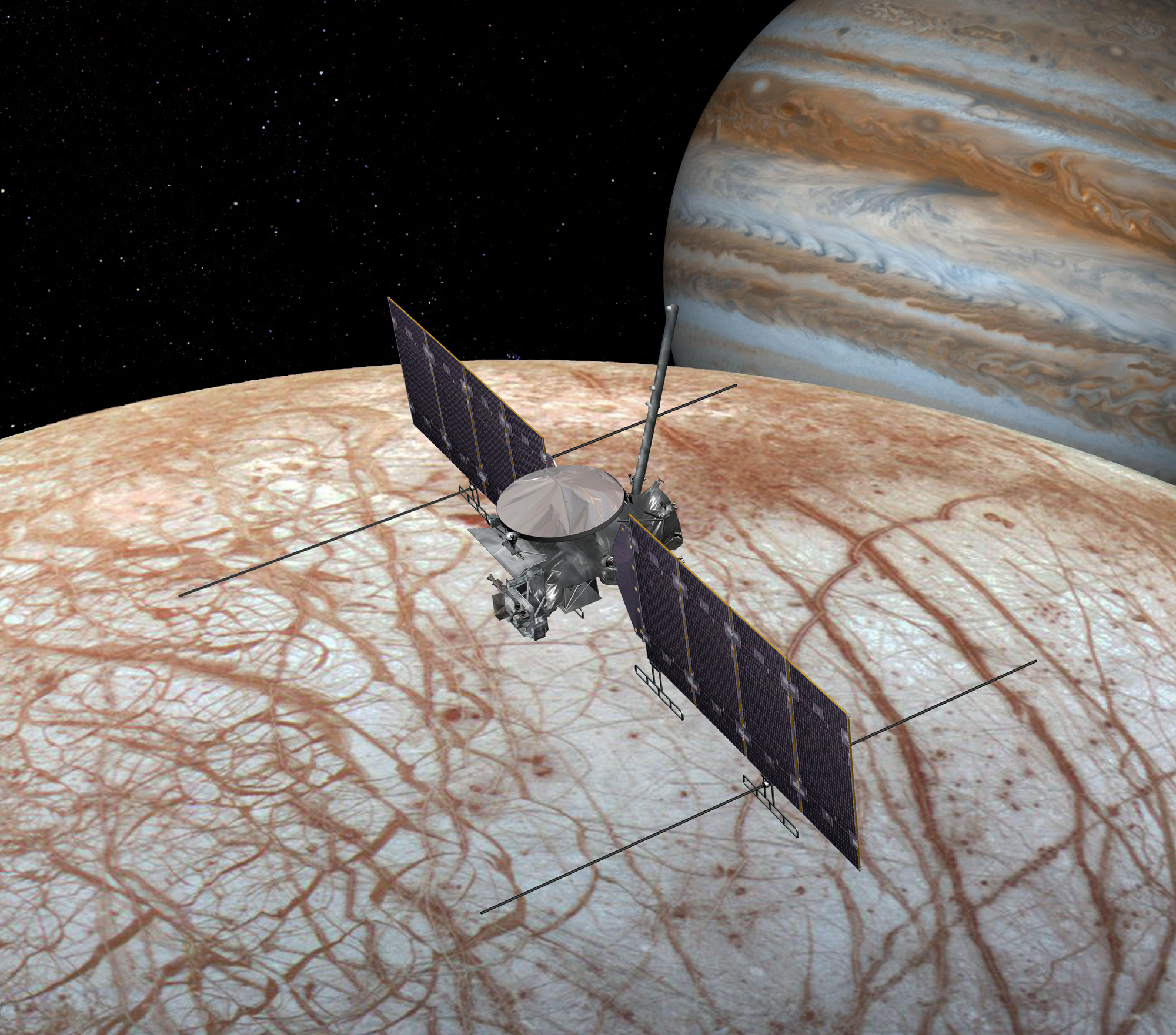
A highly anticipated NASA mission to Jupiter's possibly life-supporting moon Europa remains on track for a mid-2020s launch.
NASA has cleared the Europa Clipper mission to proceed through the final-design phase and then into spacecraft construction and testing, agency officials announced yesterday (Aug. 19).
"We are all excited about the decision that moves the Europa Clipper mission one key step closer to unlocking the mysteries of this ocean world," Thomas Zurbuchen, associate administrator for the Science Mission Directorate at NASA headquarters in Washington, D.C., said in a statement.
Related: Photos: Europa, Mysterious Icy Moon of Jupiter
"We are building upon the scientific insights received from the flagship Galileo and Cassini spacecraft and working to advance our understanding of our cosmic origin, and even life elsewhere," Zurbuchen said, referring to NASA probes that orbited Jupiter and Saturn, respectively.
The 1,940-mile-wide (3,120 kilometers) Europa harbors a huge ocean of liquid water beneath its icy shell. This water is in contact with the moon's rocky core, scientists believe, making possible a range of interesting chemical reactions. Astrobiologists therefore consider Europa one of the solar system's best bets to host alien life.
Europa Clipper won't search for signs of life, but the probe will attempt to gauge the moon's habitability. The Jupiter-orbiting spacecraft will characterize the moon's ocean during dozens of flybys and collect a variety of other data as well — including scouting out good touchdown locations for a potential life-hunting lander mission.
Get the Space.com Newsletter
Breaking space news, the latest updates on rocket launches, skywatching events and more!
If all goes according to plan, Clipper will launch in 2023 or 2025, NASA officials said. Congress has told NASA to launch the spacecraft atop the agency's Space Launch System (SLS) megarocket, which is still in development.
SLS' first flight is currently targeted for 2020. That uncrewed mission, known as Artemis 1, will send NASA's Orion capsule on a journey around the moon.
- Europa Report: Jupiter's Icy Moon Explained (Infographic)
- Scientists Prepare for Mission to Jupiter's Icy Moon Europa
- 6 Most Likely Places for Alien Life in the Solar System
Mike Wall's book about the search for alien life, "Out There" (Grand Central Publishing, 2018; illustrated by Karl Tate), is out now. Follow him on Twitter @michaeldwall. Follow us on Twitter @Spacedotcom or Facebook.
Join our Space Forums to keep talking space on the latest missions, night sky and more! And if you have a news tip, correction or comment, let us know at: community@space.com.

Michael Wall is a Senior Space Writer with Space.com and joined the team in 2010. He primarily covers exoplanets, spaceflight and military space, but has been known to dabble in the space art beat. His book about the search for alien life, "Out There," was published on Nov. 13, 2018. Before becoming a science writer, Michael worked as a herpetologist and wildlife biologist. He has a Ph.D. in evolutionary biology from the University of Sydney, Australia, a bachelor's degree from the University of Arizona, and a graduate certificate in science writing from the University of California, Santa Cruz. To find out what his latest project is, you can follow Michael on Twitter.








